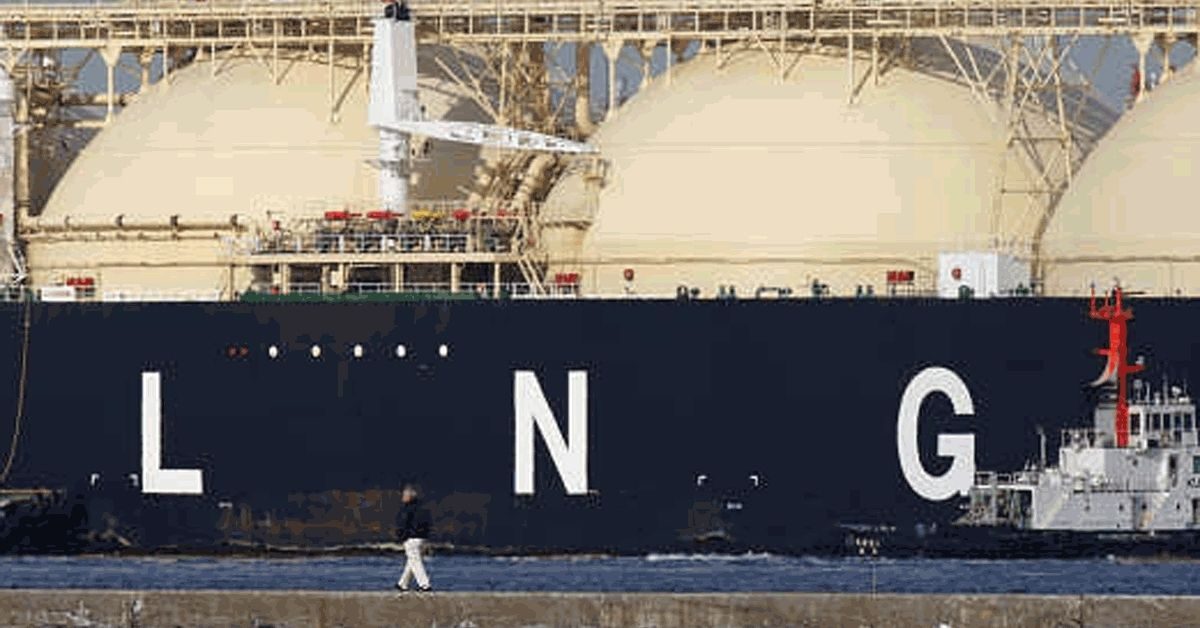Source: Hellenic Shipping
Re-exports so far in 2024 from Asia and Europe totaled 530,000 mt, around 11% of the levels a year ago, according to data from S&P Global.
Around 200,000 mt was being re-exported from the Atlantic while the rest was being re-exported from Japan, Korea, Taiwan and other parts of Asia.
Of the 2024 total, 140,000 mt headed to Japan, 120,000 mt to China, 110,000 mt to Finland, 80,000 mt to Thailand, 10,000 mt to Italy and 10,000 mt to Norway. The remaining tons are yet to be nominated.
From the beginning of the data, in 2008, to 2022, re-exports from Europe outmatched those from Asia. However, in 2023 re-exports from JKT and other parts of Asia were higher and have maintained that trend so far in 2024.
Re-export trends
European LNG re-export volumes have declined since the disruption to shipping in the Red Sea, with ships avoiding the Suez Canal route linking Europe and Asia. The lengthier route via the Cape of Good Hope reduced the incentive for European volumes to head eastward.
Spain, the largest re-exporting country, usually re-exports to Asia but shipping constraints kept cargoes inter-basin, reducing the arbitrage opportunity for re-exports, said David Lewis, LNG analyst at S&P Global.
Shipments from Barcelona to Japan via the Cape of Good Hope could make th ejourney 20 days longer, costing an extra 62 cent/MMBtu on freight rate and additional boil-off, according to shipping data from S&P Global.
Qatari cargoes could be an alternative to European re-exports. Qatari volumes hold a logistical advantage over US and European cargoes as they don’t need to go via the Suez Canal to Asia.
For January, 12.6% of the total LNG import of JKM market was delivered from Qatar, according to S&P Global analysts.
“Asian re-exports reached 2.7 million mt/year, marking a 46% year-on-year increase… Having declined in 2022 due to an unexpected increase in LNG demand, European re-exports rebounded by 27% in 2023 to 2.5 million mt/year,” Ayush Agarwal, LNG analyst at S&P Global, said in a 2024 LNG trade report. “Mainland China emerged as the leading re-exporter in the Asia-Pacific region (1.0 million mt), overtaking Indonesia. Indonesia (0.9 million mt) continued its strong re-export activities, driven by TotalEnergies’ 2021 deal to use the Arun regasification terminal as a trading hub.”
Agarwal said that alongside the decline in Europe’s share of global re-exports from over 50% in 2021 to 43% in 2023, the distribution of its reexports has undergone significant changes.
In 2022, around 73% of total European re-exports remained within the region; however, in 2023, this dropped to around 35% staying within Europe. Almost 38% of the exports were directed to other Asian markets, primarily to mainland China.
Re-exports from mainland China in 2023 nearly doubled year on year. An increase in term deliveries, combined with a slow recovery in demand from the lows of 2022 and a price-sensitive downstream market, led Chinese NOCs to rapidly increase re-exports within the basin. Agarwal expects the growing trend of re-exports from China to continue to add flexibility and liquidity to trade in the Pacific Basin. Platts, part of S&P Global, assessed the March JKM at $9.459/MMBtu and the JKM April derivatives at $9.510/MMBtu on Feb. 6. The Platts DES Northwest Europe Marker for March was assessed at $8.406/MMBtu Feb. 6, up 21.5 cents/MMBtu on the day.







